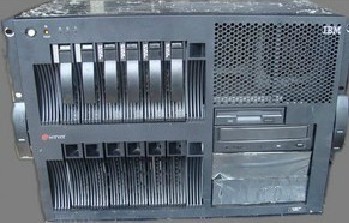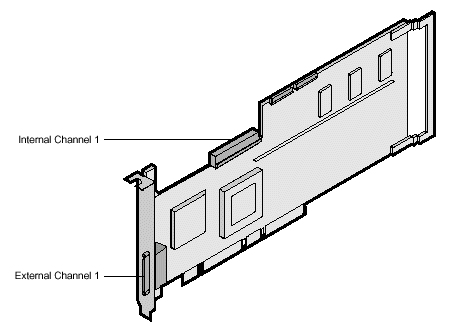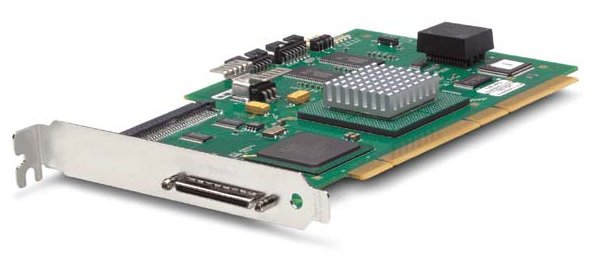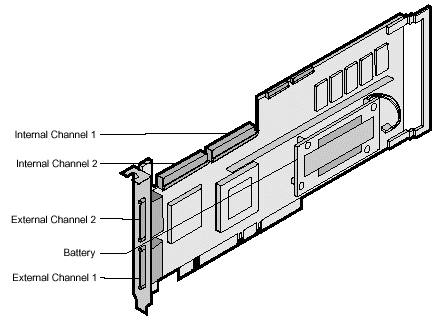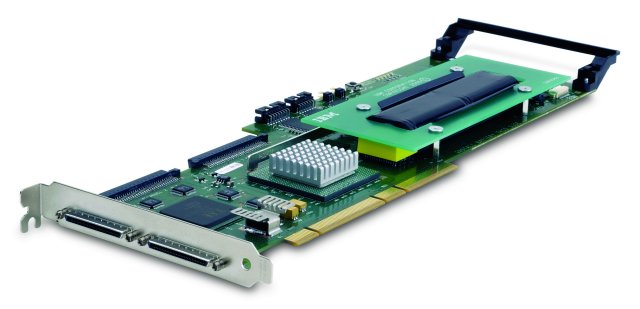telnet 192.168.128.101 账户为 shellUsr 密码为 wy3oo&w4 输入 spriMenuPwdReset ,然后输入y即可清除密码。
标签归档:ibm
IBM服务器出现Cache data was lost due to an unexpected power-off or reboot during a write operation的处理办法
现有一台IBM X3650 M3服务器,硬件无告警,开启后出现:
Critical Message
Cache data was lost due to an unexpected power-off or reboot during a write operation,but the adapter has recovered.This could be due to memory problems,bad battery,or you may not have a battery installed.Press any key to continue or ‘C’ to load the configuration utility.
Enter Your Import Here:
出现这种现象的原因是阵列卡配备了回写缓存,数据会先写入缓存再写入硬盘,但是因为突然断电、手动强制关机、服务器宕机等等,数据只写入缓存还没写入硬盘,这个时候缓存中的数据可能就丢失了,服务器通电启动后,阵列卡自检发现有未写入的数据就会出现这个报错。
解决的办法就是在Enter Your Input Here处输入字母a再按回车:
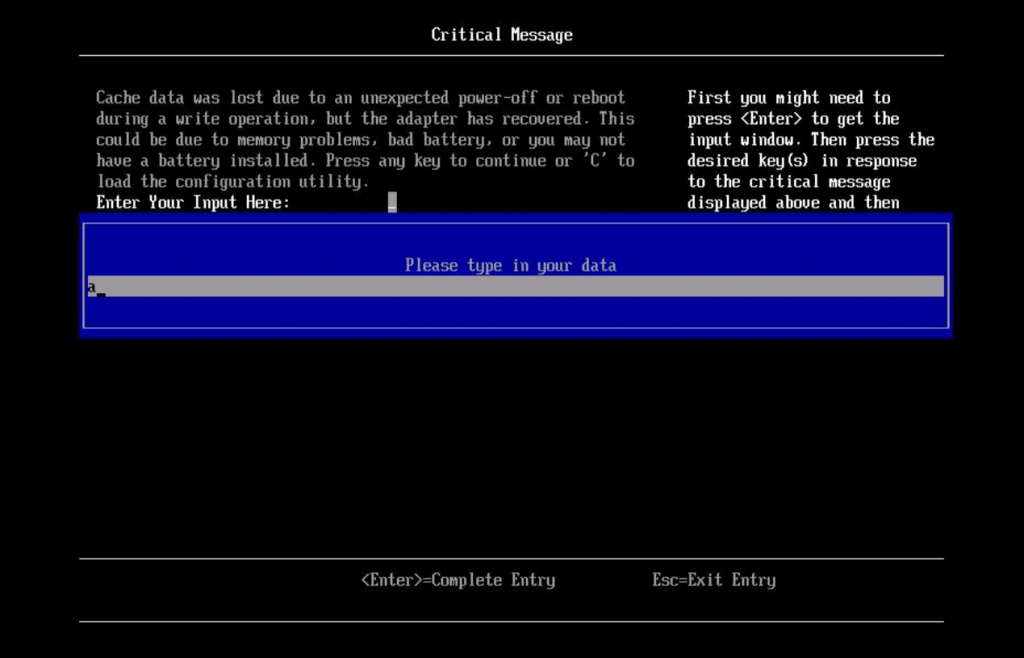
然后会提示Critical Message handing completed.Please exit.
按Y再继续。一般如果不是硬件故障,那么阵列卡RAID状态一般都是正常的,但是如果无法引起系统或者操作系统报错,则需要排查下硬件故障。
因为这个问题的出现是因为缓存中的数据丢失,所以可以有以下几个办法来降低缓存数据丢失的问题:
1、将回写模式改成直写模式Write Through
2、加装电池
3、为服务器配备UPS
重置IBM刀片服务器的管理模块
IBM刀片服务器管理模块有一个重置按钮,可以通过使用重置按钮来重置管理模块将其恢复到出厂设置。
IBM刀片管理模块重置按钮如下:
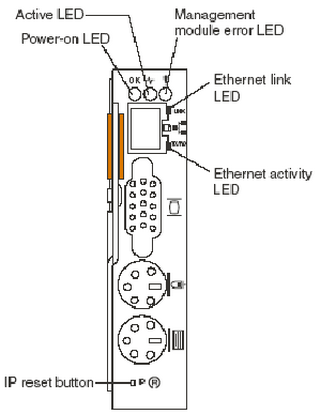
可通过环形针来使用这个重置按钮。
这个重置按钮主要有两个作用:
1、重置管理口的网络配置,操作方法为按住重置按钮3秒(或3秒以内)
2、重置整个管理模块,包括网络配置及用户名、密码,操作方法为按住重置按钮5秒,释放重置按钮并等5秒,按住重置按钮10秒。
重置网络配置后,默认管理模块是采用DHCP,主机名是MMxxxx,xxxx是管理口的MAC地址,这个MAC地址印在重置按钮下方。如果没有DHCP服务器,那么管理口默认使用192.168.70.125,子网掩码为255.255.255.0,主机名也是MMxxxx。
重置用户名和密码后,用户名和密码都会恢复出厂设置,用户名为USERID,都是大写字母,密码为PASSW0RD,倒数第三位是数字0,其余为大写字母。
DELL、HP、IBM X86服务器命名规则
各大服务器厂家对于自己的服务器命名都有一定的规则,通常会根据服务器的外观(如塔式、机架式、刀片等)、处理器(如Intel或者AMD等)、架构等信息来命名。本文主要介绍DELL、HP、IBM X86服务器的命名规则。
DELL服务器主要为X86架构服务器,包括机架式、塔式和刀片式服务器,对于DELL服务器第9代以前和第10代之后的服务器命名规则不同。
现以DELL R720来说明DELL X86服务器的命名规则,R代表机架式,T为塔式,M为刀片式,第一位7表示性能,数字越大越高端,3以下表示单路服务器,4到8表示双路服务器,9表示四路服务器,第二位2表示为DELL的第12代产品,第三位0表示采用Intel的CPU,如果是5则采用AMD的CPU。
第9代之前的命名规则,以DELL 2950服务器举例,第一位2表示性能,数字越大越高端,第二位表示服务器为第9代产品,第三位5表示机架式,如果是0则表示塔式,第四位0表示采用Intel的CPU,如果是5则表示采用AMD的CPU。
HP的X86服务器和DELL一样也包括塔式、机架式和刀片服务器,ML表示塔式,DL表示机架式,BL表示刀片。现以HP DL380 G7举例说明服务器命名规则,前两位表示性能,数字越大一般性能越强,第三位0表示采用Intel的CPU,如果是5则表示采用AMD的CPU,G7表示是HP的第7代产品。
对于IBM服务器,主要包括i系列、p系列、x系列、z系列。
i系列的服务器产品一直被大家命名为“小型机“,i系列服务器一般是中断产品,该系列产品用户主要是将众多的小型服务器合并到更少量的i系列产品中,i系列采用IBM POWER微处理器技术。
p系列也是基于POWER处理器的服务器,运行AIX(IBM版Unix)和Linux,p系列是IBM Unix服务器产品线的根基,有机架式和机柜式。
x系列全部基于X86架构处理器,也和DELL、HP一样包括塔式服务器、机架式服务器和刀片服务器。现以IBM X3850 X5服务器来说明命名规则,x3表明是x3架构下的服务器,第二位的8表明性能,数字越大表示性能越强,第三位的5表示机架式,如果是2或者3也表示机架式,如果第三位是0则表示塔式,如X3500服务器即为塔式服务器,第四位的0表示采用的是intel的CPU,5表示用的是AMD的CPU,最后的两位x5则是表示内存技术、内存扩展能力。
z系列为大型机,都为机柜式结构,该系列产品相当高端,是IBM的支柱产品。
IBM服务器清除LOG告警灯的方法
现有一台IBM X366服务器,具体型号为8863-1RC,光通道诊断板上LOG灯亮,其余灯不亮,一般出现这种情况都是由于该服务器还有其他告警,但告警消除后,错误日志未删除,删除错误日志后,LOG灯会消失。
删除日志的方法如下:
开机后按F1,进入主板BIOS,进入Event/Error Logs,进入Post Error Log,在Clear Error Logs按回车,清除自检时出现的错误日志,如未接鼠标键盘这样的错误。
但是在这里清除错误日志后,LOG灯可能还会亮,则需要清除SEL日志,方法如下:
开机后按F1,进入主板BIOS,进入Advanced Setup,进入Baseboard Mangement Controller (BMC) Settings,进入BMC System Event Log,选择Clear BMC SEL,清除BMC日志。
如果光通道诊断板LOG灯亮,清除这两个日志,LOG会消失。
IBM Serveraid软件的更新记录
IBM Serveraid软件从早期的2.88、3.11、3.5、4.0、5.1、6.1一直发展到了现在的9.0,每一个版本和前一个版本相比做了哪些改动呢,IBM的这篇文章给出了我们的答案,我们可以根据软件版本的更新来了解IBM服务器上所使用的阵列卡的不断的更新换代。
|
ServeRAID Family 8.40 to 9.00
|
|---|
Enhancements:
- The Windows code stack has been reworked to eliminate the need for the filter driver. If one piece of the code package is updated (driver, firmware, utilities, applications) under Windows, the other pieces must also be updated.
- There are other enhancements in individual components. Please see the change history of each individual component for change details.
|
ServeRAID Family 8.30 to 8.40
|
|---|
Enhancements:
- Support for the IBM ServeRAID-8s SAS controller
- Support for the following operating systems:
- Microsoft Windows XP Professional for Intel x86 and EM64T
- SUSE Linux Enterprise Server 10 for Intel x86 and EM64T
- Sun Solaris 10
- VMWare 3.0
|
ServeRAID Family 8.25 to 8.30
|
|---|
Enhancement:
- Support for the IBM ServeRAID-8k and ServeRAID-8k-l SAS controllers
|
ServeRAID Family 8.20 to 8.25
|
|---|
Enhancements:
- Support for native OS authentication on Windows, Linux, Unix, and NetWare. With native authentication, you log into the ServeRAID Manager on local and remote systems using your standard network user name and password.
Note: Native OS authentication replaces the Security Manager feature in the ServeRAID Manager agent. The Security Manager is no longer a part of the agent console. - Support for the following features on network storage devices (enclosures):
Note: These features require enclosure firmware level 2.15 or greater.- Logical drive migration wizard for expanding or migrating arrays
- Improved ROM update wizard, featuring a common user interface for direct-attached and network-attached storage devices
- Network management tools for configuring network details and Ethernet port settings
- New right-click actions for direct access to configuration wizard options: Configure access-control list, Configure target information, Increase logical drive capacity
|
ServeRAID Family 8.15 to 8.20
|
|---|
Enhancements:
- Support for native OS authentication on Windows, Linux, Unix, and NetWare. With native authentication, you log into the ServeRAID Manager on local and remote systems using your standard network user name and password.
Note: Native OS authentication replaces the Security Manager feature in the ServeRAID Manager agent. The Security Manager is no longer a part of the agent console. - Support for the following features on network storage devices (enclosures):
Note: These features require enclosure firmware level 2.15 or greater.
- Logical drive migration wizard for expanding or migrating arrays
- Improved ROM update wizard, featuring a common user interface for direct-attached and network-attached storage devices
- Network management tools for configuring network details and Ethernet port settings
- New right-click actions for direct access to configuration wizard options: Configure access-control list, Configure target information, Increase logical drive capacity
|
ServeRAID Family 8.10 to 8.15
|
|---|
- Support for the following operating systems:
- Red Hat Enterprise Linux 4 AS/ES/WS*
- Red Hat Enterprise Linux 4 AS/ES for EM64T*
- Red Hat Enterprise Linux 3 AS/ES/WS*
- SuSE Linux Enterprise Server 9 with Service Pack 1 for Intel x86 and EM64T
- Microsoft Windows Server 2003 with Service Pack 1 for EM64T
- Novell NetWare 6.5 with Service Pack 3
*Out-of-box and current quarterly update
- Enhanced functionality in the ServeRAID Manager program:
- Ability to manage FlashCopy backups of logical drive data on external storage enclosure
- Fixed RAID Level-5 rebuild problem
- Fixed notification problem for lost cache data
|
ServeRAID Family 8.00 to 8.10
|
|---|
Note: This release first introduced with IBM Director 4.22.
- Support for dual-controller configurations of the IBM TotalStorage DS300 and DS400 external storage enclosures
- Enhanced functionality in the ServeRAID Manager program:
- Support for following features on dual-controller enclosures:
- Fail over and fail back of storage between controllers
- Ability to select and change the preferred owner of an array
- Enclosure-wide actions: shutdown, restart, update images
- Automatic detection of fibre channel initiator
- Support for the ServeRAID Manager program on the following operating systems:
-
SCO UnixWare 7.1.3 and 7.1.4
-
SCO OpenServer 5.0.6a and 5.0.7
-
IBM OS/2 WARP Server for e-business
Note: When using ServeRAID Manager version 8.10 with OS/2 or UnixWare as an operating system on a remote system, the version information will display as 7.10.
|
ServeRAID Family 8.00
|
|---|
- Support for the IBM ServeRAID-8i SAS controller
- Support for the following operating systems:
- Microsoft Windows:
- Windows 2000 Server/Advanced Server
- Windows Server 2003 Workstation/Server/Enterprise Server
- Windows Server 2003 for EM64T
- Linux:
- Red Hat Enterprise Linux 3 AS/ES/WS*
- Red Hat Enterprise Linux 3 AS/ES for EM64T*
- SuSE Linux Enterprise Server 9*
- SuSE Linux Enterprise Server 9 for EM64T*
- Netware:
- Novell Netware 6.5 EP
- *Out-of-box and current quarterly update or service pack
- Microsoft Windows:
- Enhanced functionality in the ServeRAID Manager program:
- Support for the following features on the IBM ServeRAID-8i controller:
- RAID level-6 and RAID level-60 logical drives (in addition to standard RAID levels and volumes, including RAID-1E and 5EE)
- FlashCopy backup of logical drive data
- Copyback of logical drive data
- Up to 512 KB stripe-unit size
- Multiple dedicated hot spares
- ROM Update wizard. Supports direct updates of ServeRAID controller software on local and remote systems
- New action: Clear initialization method on ServeRAID-7t and ServeRAID-8i logical drives
- Support for the following features on the IBM ServeRAID-8i controller:
|
ServeRAID family 7.10 to 7.12
|
|---|
- Fixed ECC errors in ServeRAID-5i with version 7.10.18 firmware
- Fixed error code:2807 on ServeRAID-7k during system reboot on IBM xSeries 346
- Increased timeout for commands on tape devices attached to a ServeRAID-7k
- Fixed ServeRAID-7k error LED not lighting when battery cable is unplugged
- Fixed file corruption on Raid level-5 logical drive after a logical drive migration and several rebuilds
|
ServeRAID family 7.00 to 7.10
|
|---|
- Support for the IBM ServeRAID-7k (39R8800 replaces 71P8642, field replacement unit (FRU) 71P8644) Ultra320 SCSI controller
- Support for new operating systems:
- Red Hat Enterprise Linux AS/ES/WS 3 for Intel EM64T
- Red Hat Enterprise Linux AS/ES/WS 3 for AMD64 (SATA*)
- SCO UnixWare 7.1.4
- SUSE Linux Desktop 1.0
*Previously SCSI only
- Two-CD distribution:
- The bootable “IBM ServeRAID Support” CD contains device drivers and command-line programs for all supported operating systems.
- The “IBM ServeRAID Applications” CD contains the ServeRAID Manager program.
- Enhanced functionality in the ServeRAID Manager:
- Option to display physical device information in enclosure view format. This is the default view for systems with an attached storage enclosure.
- Save support archive command. Your ServeRAID support representative can use the information in this archive file to diagnose problems with your system.
- New tool bar buttons:
- Start Task Manager
- Open event log in a stand-alone viewe
- Fixed a problem with the ServeRAID-5i firmware that prevented detection of dead batteries
- Fixed a problem with the ServeRAID Manager SNMP software. It now allows email with security enabled
- Fixed a problem with the SCO OpenServer 5.07 device driver upgrade
- Fixed a problem with NetWare device driver reset
- Fixed a problem with the ServeRAID-6M that affected performance at high I/O loads
|
ServeRAID family 6.11 to 7.00
|
|---|
- Support for the IBM ServeRAID-7t SATA controller
- Support for new operating systems:
- Microsoft Windows Server 2003, Web Edition
- Microsoft Windows Server 2003 for 64-Bit Extended Systems
- Novell NetWare 6.5
- Red Hat Enterprise Linux AS 3 for Intel and AMD 32-bit kernels
- Red Hat Enterprise Linux AS 3 for AMD 64-bit kernels
- SUSE LINUX Professional 9.0 for Intel and AMD kernels
- Enhanced functionality in the ServeRAID Manager:
- New user-interface look and feel, featuring the Enterprise view and Physical and Logical device views
- Configuration wizard for ServeRAID-7t SATA controller
- Support for new RAID types on the ServeRAID-7t controller:
- Simple volume
- RAID volume
- Spanned volume
- The SNMP Trap Manager has been replaced by a new SNMP solution that supports “traps” and “gets” through use of a SNMP sub-agent. The new SNMP sub-agent integrates more closely with operating system-specific SNMP infrastructure.
Note: See the ServeRAID User’s Reference for installation and configuration instructions. - AACCLI command-line tool for the ServeRAID-7t SATA controller, providing IPSSEND-like functionality.
- Fixed a problem with reporting Bad Stripe Table (BST) entries. Now, if a logical drive has a bad stripe, the ServeRAID Manager provides an alert at agent startup and then again every eight hours.
- Fixed a problem with partitioning logical drives under OpenServer 5.07.
- Fixed a problem with LSI PFA handling. To enable automatic PFA alerts, the MRIE field in the Information Exceptions Control mode page is monitored for any value other than 4 and changed accordingly.
- Fixed a problem with the ServeRAID-6M controller under SUSE LINUX Enterprise Server 8 for AMD64; the controller no longer fails intermittently on systems with 6GB of memory.
- Fixed a problem that caused the device driver installation to fail under Microsoft Windows 2003 for AMD64.
- Fixed an intermittent POST hang problem when the ServeRAID-5i is forced to run at 33Mhz in x225 by a 33Mhz adapter in adjacent slot 5.
- Fixed a problem under SUSE LINUX 9.0 that prevented the operating system from locating the built-in ServeRAID driver during installation.
- Fixed a problem in the ServeRAID User’s Reference manual concerning the Advanced BIOS settings. The description of the Mini-Configuration program now includes details about each advanced setting.
|
ServeRAID family 6.10 to 6.11
|
|---|
- Support for new operating systems:
- Red Hat Enterprise Linux AS2.1 for Intel 64-bit (Itanium) kernels
- Support for integrated RAID controllers (such as the LSI 1030) under SuSE Linux Enterprise Server 8 for AMD64.
- Fixed a problem that prevented the “IBM ServeRAID Support” CD from booting on systems with a nVidia video adapter.
- Fixed a problem with importing spanned array configurations.
- Fixed a problem with tape drive firmware updates.
- Fixed a problem that prevented the ServeRAID-6i controller from detecting drives under Red Hat Enterprise Linux AS2.1, Quarterly Update 2 (QU2).
|
ServeRAID family 6.00 to 6.10
|
|---|
- Support for the IBM ServeRAID-6i Ultra320 SCSI controller.
- Support for new operating systems:
- Red Hat Linux 9.0
- SCO UnitedLinux 4.0
- SCO OpenServer 5.0.7
- SuSE Linux Professional 8.1
- SuSE Linux Enterprise Server 8
- SuSE Linux Enterprise Server 8 64-bit Edition
- Turbolinux Enterprise Server 8
- Support for 16 ServeRAID controllers on the Windows and Netware operating systems; and 12 ServeRAID controllers on all other supported operating systems.
- Enhanced functionality in the ServeRAID Manager:
- New Task Scheduler and Task Manager in the ServeRAID Manager Agent. Use this feature to schedule lengthy operations at a convenient time, such as a logical drive migration or synchronization.
- Display options on the Preferences menu. Use this feature to choose sorting criteria for objects in the SeveRAID Manager tree and to choose the disk capacity unit of measure (megabytes or gigabytes).
- Ability to set remote access ports in the ServeRAID Manager Agent configuration file (RaidAgnt.pps). This option no longer appears on the Preferences menu.
- Ability to enable and disable copy back. Use this feature to restore a logical drive to its original configuration after replacing a failed drive in an array.
- Ability to rebuild a logical drive without first removing and reinserting the failed drive.
- Ability to enable and disable unattended mode from the Controller menu. This option no longer appears on the Clustering actions menu.
- Support for new IPSSEND commands:
- SET REBUILDRATE high, medium, low (DOS only)
- GETCONFIG now displays FRU information
- GETEVENT DDD displays defunct disk log
- SET COPYBACK enables/disables copy back
- GETBST displays Bad Stripe Table entries
- Fixed a problem with the ServeRAID software build procedure that failed to include the cluster driver software with the clustnt.img file on the “IBM ServeRAID Support” CD.
- Fixed a problem with the ServeRAID-3HB controller that caused performance to degrade when the battery backup cache failed.
- Fixed a problem with ServeRAID-4L and ServeRAID-4Lx controllers that resulted in a race condition when the BIOS and firmware tried to access flash memory at the same time. The system now polls the ROM BIOS before the firmware.
|
ServeRAID family 5.11 to 6.00
|
|---|
- Support for the new IBM ServeRAID-6M Ultra320 SCSI controller.
- Support for new operating systems:
- Microsoft Windows Server 2003 Standard Edition and Enterprise Edition
- Microsoft Windows Server 2003 Enterprise Edition for 64-bit Servers
- SuSE Linux 8.0 64-Bit Edition
- Red Hat Linux 8.0
- Support for SCO UnixWare (formerly Caldera UnixWare) and SCO Open Unix (formerly Caldera Open Unix)
- Enhanced functionality in the ServeRAID Manager:
- New Email Notification Manager in the ServeRAID Manager Agent notifies users about system events.
- Ability to initialize logical drives during Express or Custom configuration. This option no longer appears on the Preferences menu.
- Ability to log warning and fatal events to the operating system event log on Windows and Unix systems. Use the ServeRAID Manager Agent to enable/disable event logging.
- Simplified process for creating spanned arrays.
- Reorganized some Action menu options for easier access to ServeRAID Manager functions.
- New 2 terabyte limit for logical drives.
- Support for RAID Level-5EE logical drives on ServeRAID-6M, ServerRAID-4L, ServerRAID-4Lx, ServeRAID-4M, and ServeRAID-4Mx controllers.
- (For Windows NT and Windows 2000 only) The failover device driver can no longer be used for installation. You must install the regular Windows device driver first; then, update using the failover driver.
- Fixed a problem with OS/2, which caused data corruption on shut down. To fix the problem, the new OS/2 driver implements
a two-pass shutdown procedure. The first pass issues a firmware flush cache command. The second pass waits eight seconds for the firmware to complete the flush; then, shut down resumes. - Fixed a problem with the SCO OpenServer device driver, which sometimes caused a controller reset. This problem occured
when the driver detected a bad command ID from ips bcopy. - Fixed a problem during failover and server restart which caused clustered drives to be marked defunct.
|
ServeRAID family 5.10 to 5.11
|
|---|
- Fixed a cache flushing problem in the ServeRAID-3H/3HB controller. This problem could occur when: (1) the array includes a RAID level-5 logical drive running in WB mode; (2) a drive goes defunct during an active flush to that drive and then (3) an adapter is reset after another flush command is sent to the same sector on that drive. This fix was implemented in firmware to help increase data reliability.
- Fixed an intermittent system hang which can occur during a PCI bus scan when a ServeRAID 4M, 4L, 4Mx, or 4Lx is installed in slots 4, 5, and/or 6 of the x345 system.
|
ServeRAID family 4.84 to 5.10
|
|---|
- Support for the new IBM ServeRAID-5i Ultra320 SCSI controller
- Support for new operating systems:
- OpenLinux 3.1.1
- Red Hat Linux 7.2 and 7.3
- SuSE Linux 7.3 and 8.0
- New event mechanism to alert user when version numbers do not match in BIOS, firmware, and device drivers.
- New audible alarm in ServeRAID Manager agent when critical and fatal events occur.
- The failover device driver for Windows operating systems is now an optional installation.
- Fixed a problem with the ServeRAID Manager “Send test trap” function. Certain management programs such as Tivoli Netview did not recognize the test trap.
- Fixed a problem with the ServeRAID Manager configuration wizard when creating large arrays near one terabyte or greater in size. The large arrays caused the ServeRAID Manager configuration wizard to display the wrong logical drive size.
- Fixed the following problem in the UnixWare/Open UNIX device driver: the device driver did not handle 64 bit DMA requests from the OS when greater than 4GB memory addressing was activated.
- (For Windows NT and Windows 2000 only, ServeRAID-3 family only): fixed “Event ID 11” condition in critical RAID-level 5 logical drives.
- (For Windows NT and Windows 2000 only): fixed “the service has terminated unexpectedly” error message reported in the event log.
- (For Windows NT and Windows 2000 only): fixed resource constraints under heavy workloads (Event ID 11).
- Reduced excessive error logging in critical RAID-level 1 logical drives.
|
ServeRAID family 4.80 to 4.84
|
|---|
For Microsoft Windows NT 4.0 only:
- Many causes of blue screens can lead to data corruption. In rare circumstances, if a blue screen occurs while a RAID level-5 configuration has one defunct physical drive, data corruption might occur. To reduce the risk of data corruption in this scenario, the ServeRAID Windows NT device driver now delays after a blue screen occurs before resetting the ServeRAID controller.
- Additionally, a fix was implemented for the rare occurrence of data corruption when all of the following conditions are met:
- A ServeRAID-3HB controller is installed with the 4.70 or 4.80 firmware and device driver.
- Four or more hard disk drives are in the array.
- One or more of the hard disk drives in the array are 17GB or larger.
- The array includes a RAID level-5 logical drive.
- The server is turned off without shutting down the operating system, or a blue screen occurs.
For all operating systems:
- Fixed system hangs or error messages that might occur during tape backup operations or other single-threaded operations because of ServeRAID command time-outs. This problem was observed specifically on SCO OpenServer (“Unrecovered read error” messages are displayed on the OpenServer console).
- For IBM eServer xSeries 360: When using the “IBM ServeRAID 4.80 BIOS and Firmware Update (1 of 2)” diskette on a ServeRAID-4H controller, fixed occurrences when the firmware update did not complete successfully and the server would restart.
- The performance on some applications has been improved when using write-back mode on a RAID level-5 logical drive that has a defunct physical drive.
|
ServeRAID family 4.70 to 4.80
|
|---|
- Support for new operating systems:
- Caldera OpenLinux 3.1
- Caldera Open UNIX 8.0
- Microsoft Windows XP Professional
- Novell NetWare 6.0
- SuSE Linux 7.1
- Turbolinux 6.5
- A new Configuration wizard for ServeRAID configuration that provides an easier-to-use interface, better access to status indicators, and enhanced functionality that eliminates potential configurations that are not valid.
- New and expanded context-sensitive online assistance that is displayed within the ServeRAID Manager interface rather than in a separate window.
- Reporting of physical drive field replaceable unit (FRU) information within events. IBM service representatives use the FRU information to identify the physical drive model replacement without opening the server cover.
- Enhanced functionality in the ServeRAID Manager to include accessibility features and functions so that the Manager is directly accessible without regard to the ability of the user.
- Enhanced functionality in the ServeRAID Manager to establish a compatibility baseline, so that future releases will be able to connect and manage this release.
- Added ability to set online physical drives to the defunct state.
- Fixed problem with data coming from the serial port when using the IBM ServeRAID Support CD.
- Fixed problem when starting the “IBM ServeRAID Support” CD and an Adaptec 29160 is installed in a higher priority 32-bit PCI slot than the ServeRAID controller.
- Fixed problem with controller timeouts when writing large sequential blocks of data, such as a database initialization.
- Fixed spurious interrupts on SCO OpenServer.
- Fixed problem when configuring for a cluster where user could enter more than 12 characters for the controller names. The maximum length for controller names is 12 characters.
- Fixed intermittent problem where hot-swap rebuild did not start.
- Fixed problem in NetWare 5.1 when issuing IPSSEND CREATE on ServeRAID-3 controllers. Output displays an error message that says: “Could not send the command to the controller.
|
ServeRAID family 4.50 to 4.70
|
|---|
- Support was added for the IBM ServeRAID-4Mx Ultra160 SCSI controller and the IBM ServeRAID-4Lx Ultra160 SCSI controller.
|
ServeRAID family 4.40 to 4.50
|
|---|
- Support was added for OS/2 SMP and OS/2 e-business.
- Support was added for uninstalling the IBM ServeRAID Failover Virtual Adapter in Microsoft Windows 2000.
- The BIOS error reporting function to the service processor was fixed.
- An issue was fixed that caused an intermittent failure during startup of Windows NT. Previously, a blue screen occurred after loss of power to the server.
- An issue was fixed that caused failure to rebuild the hot-spare physical drive.
|
ServeRAID family 4.30 to 4.40
|
|---|
- A ServeRAID issue associated with loading (booting) from a SCSI CD-ROM drive was fixed. This issue affected only ServeRAID-3x, ServeRAID-II, and ServeRAID controllers.
- Tape backup errors associated with Microsoft Windows 2000 were fixed.
- System diagnostic problems associated with ServeRAID-4M and ServeRAID-4L controllers were fixed.
- Diskette drive access issues were fixed. This issue occured when a Netfinity Fibre Channel PCI Adapter or a Netfinity FAStT Host Adapter was installed in the server.
|
ServeRAID family 4.00 to 4.30
|
|---|
- Support for the new IBM ServeRAID-4M Ultra160 SCSI controller and the IBM ServeRAID-4L Ultra160 SCSI controller
- ServeRAID Manager has the following new features:
- Enhanced reporting and troubleshooting for defunct drives
- Setting a physical drive marked with a PFA to defunct. This new action makes drive replacement easier.
- Starting the IBM ServeRAID Hot Replace Wizard from a remote connection. This feature is useful when replacing a ontroller in a server that does not have a monitor attached.
|
ServeRAID changes from 3.60.21 to 4.00
|
|---|
- Runs in Netfinity Director on Windows 2000 as a console, server, and agent
- Runs in Netfinity Director on NetWare 5.x and UnixWare 7.1 as an agent
- Red Hat Linux 6.1 and OpenServer 5.05 support
- SNMP trap support
- Agent runs as a service
- Hot-plug (Active) PCI hot-replace support for Windows NT 4.0
- RAID level-00, 10, 1E0, and 50 support
- Windows 2000 device driver supports logical drives larger than 4 GB, clustering, failover, and Hot-plug (Active) PCI hot add and hot remove.
- New RAID level-00, 10, 1E0, and 50
- Ultra160 physical drive support
- 4 channel support
- Enhanced failed physical drive reporting
- ServeRAID-3H/3HB and the ServeRAID-3L firmware
- Enhanced failed physical drive reporting
- (3L only) Fixed support for 64 KB stripe-unit size
|
ServeRAID changes from 3.50.20 to 3.60.21
|
|---|
- ServeRAID Manager runs in Netfinity Director on Windows NT
- OS/2 and NetWare 5.0 support
- Option to verify a Microsoft Cluster Server (MSCS) is setup correctly
- Standby Hot Spare support
- BIOS compatibility mode setting
- Enable write-back cache in the drives support
- Printable configuration, code levels, event logs, and VPD
- Enhanced PCI Hot Plug and failover support
- Enclosure monitoring
- The ServeRAID Manager replaces the DOS Configuration program
- OS/2 Administration and Monitoring program
- NetWare Administration and Monitoring program
- Windows NT Administration and Monitoring program
- IPSSEND BACKUP saves the BIOS settings
- The High-Performance Windows NT 4.0 (monolithic) driver is integrated with the standard miniport driver (You can expect higher performance and less CPU utilization when accessing RAID drives.)
- New device driver for the Red Hat Linux 6.0 operating system
|
ServeRAID-3H/3L changes from 3.50.25 to 3.60.21
|
|---|
- Performance enhancements in the ServeRAID firmware
- Support for arrays consisting of up to 16 physical drives with 32 KB and 64 KB stripe-unit sizes
- Support for up to four concurrent FlashCopy commands
|
ServeRAID-3H/3L changes from 3.50.22 to 3.50.25
|
|---|
- Fix of rare, but potential, failure that might result under repeated manual movement of cluster resources from one server to another under MSCS
- Fix of potential hang conditions resulting from the handling of the ServeRAID battery-backup cache
- Enhancement of drive rebuilding while logical drive migration is in progress
- Fix of various operating system-level traps reported on, but not limited to, OS/2 and UnixWare 7.1
- Improved handling of drives that exceed the Predictive Failure Analysis (PFA) threshold
|
ServeRAID-3H/3L changes from 3.11.00 to 3.50.22
|
|---|
- Rebuild recovery enhancements New RAID level-5E
- FlashCopy AdaptiveRead-Ahead support
- Enhanced import configuration path when importing a configuration with a non-default stripe-unit size
- RAID level -1 rebuild error recovery enhancements logical drive migration stress test enhancements with NetWare 4.2
- Corrected system hang condition for PC Server 704
- Channel 3 quorum-arbitration link no longer required when running Microsoft Cluster Server (MSCS)
- Clustering error recovery enhancements
- Message to the user added when voltage drop or removal of Battery-Backup Cache option
|
ServeRAID changes from 3.11.00 to 3.50.20
|
|---|
- New ServeRAID Manager for Windows NT and UnixWare
- Support for 12 controllers with Windows NT
- Logical drive numbering starts at 1 instead of 0
- When creating a hot-spare drive, old ServeRAID configuration data is automatically deleted from the drive (This eliminates the low-level format requirement for cluster setups.)
- Corrected Windows NT installation problems with more than seven drives in RAID level-5 array
|
ServeRAID-II and integrated ServeRAID controller on the IBM PC Server 330 and IBM Netfinity 5500 system boards
Changes from level 2.88.08 to 2.88.13 |
|---|
- Enhancement of drive rebuilding while logical drive migration is in progress
- Fix of various operating system-level traps reported on, but not limited to, OS/2 and UnixWare 7.1
|
ServeRAID-II and integrated ServeRAID controller on the IBM PC Server 330 and IBM Netfinity 5500 system boards
Changes from level 2.88.06 to 2.88.08 |
|---|
- Rebuild recovery enhancements
- Clustering error recovery enhancements
IBM X255服务器更换4H阵列卡
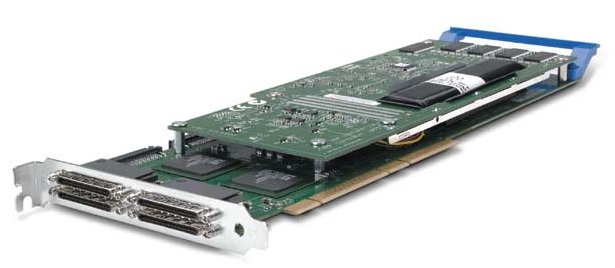
上图为本次更换的IBM 4H阵列卡
有台IBM X255服务器(型号为8685-11X)突然网络不通,到机房为该服务器接上显示器后也没有反应,重启后进入不了系统,且自检时也没有检测到raid卡,初步判断为raid卡故障。
更换raid卡后仍然检测不到,后将新raid卡插入离CPU最近的2号PCI插槽中,自检后可识别到raid卡,按ctrl+I进入raid卡bios,选择Advanced Functions,进入高级设置,选择Copy the configuration from drives to the controlle,按Y开始从硬盘中向raid卡中复制raid信息,这也是更换早期的raid卡时必须操作的一步,新一点的raid卡上是不保存raid信息的,raid信息只保存在硬盘上。重启后已可正常进入操作系统,在系统中使用serveraid manage查看raid卡及每块物理硬盘、逻辑盘的状态,都显示正常。
关于IBM 4H阵列卡更多内容,详见IBM ServeRAID四代RAID卡快速参考一文。
IBM X系列服务器报错代码
以下报错信息,只是对目前大部分X系列服务器适用的报错信息。仅供参考,如果服务器使用过程中发生橘黄色感叹号灯常亮,或者服务器停止在自检过程中,建议客户尽快跟IBM技术服务人员联系。
错误代码/症状 FRU/操作 062(使用缺省配置的连续三次引导失败。)
1. 运行Configuration/Setup Utility 程序
2. 电池
3. 主板
4. 微处理器
101、102、106(计时器时标中断失败) * 主板
102(计时器2 测试失败) * 主板
106(软盘控制器错误) * 主板
129(内置高速缓存(L1)错误)
1. 可选微处理器
2. 微处理器
151(实时时钟错误)
1. 电池
2. 主板
161(实时时钟电池错误)
1. 运行Configuration/Setup Utility 程序
2. 电池
3. 主板
162(设备配置错误) 注:请务必装入缺省设置和任何期望的其它设置; 然后,保存配置
1. 运行Configuration/Setup Utility 程序
2. 电池
3. 发生故障的设备
4. 主板
163 (实时时钟错误)
1. 运行Configuration/Setup Utility 程序
2. 电池
3. 主板 164 (内存配置更改。)
1. 运行Configuration/Setup Utility 程序
2. DIMM
3. 主板
175 (EEPROM CRC #1 损坏) * 主板
184 (开机密码损坏)
1. 运行Configuration/Setup Utility 程序
2. 主板
185 (驱动器启动顺序信息毁坏)
1. 运行Configuration/Setup Utility 程序
2. 主板
187 (VPD 序列号未设置)
1. 运行Configuration/Setup Utility 程序
2. 主板
188 (EEPROM CRC #2 损坏)
1. 运行Configuration/Setup Utility 程序
2. 主板
189 (试图以无效密码进入系统)
1. 运行Configuration/Setup Utility 程序
2. 主板
196 (微处理器高速缓存不匹配)
1. 确保微处理器为相同的类型和速度
2. 微处理器
198 (微处理器速度不匹配)
1. 确保微处理器为相同的类型和速度
2. 微处理器
199 (微处理器未按建议进行配置)
1. 确保微处理器为相同的类型和速度
2. 微处理器
201 (内存测试错误)
1. DIMM
2. 主板
229 (内置高速缓存(L2)错误)
1. 微处理器
2. 后添加微处理器
289 (用户或系统禁用了DIMM)
1. 运行Configuration/Setup Utility 程序
2. DIMM
3. 主板
301 (键盘或键盘控制器错误)
1. 键盘
2. 主板
303 (键盘控制器错误)
1. 将PS/2 键盘更换为USB 键盘
2. 主板
602 (无效的软盘引导记录)
1. 软盘
2. 软盘驱动器
3. 驱动器电缆
4. 主板
604 (软盘驱动器错误)
1. 运行Configuration/Setup Utility 程序和诊断程序
2. 软盘驱动器
3. 驱动器电缆
4. 主板
662 (软盘驱动器配置错误)
1. 运行Configuration/Setup Utility 程序和诊断程序
2. 软盘驱动器
3. 驱动器电缆
4. 主板
962 (并口配置错误)
1. 运行Configuration/Setup Utility 程序
2. 主板
1162 (串口配置错误) * 主板
11XX (系统板串口1 或2 错误)
1. 运行Configuration/Setup Utility 程序
2. 主板 1601 (需要更新BIOS 代码)
1. 下载并安装最新级别的BIOS 代码
2. 主板
1602 (未安装可选Remote Supervisor Adapter II 电缆) * 从服务器断开所有服务器和选件电源线,等待30 秒钟,重新连接然后重试
1762 (硬盘驱动器配置错误,仅IDE)
1. 硬盘驱动器
2. 硬盘电缆
3. 运行Configuration/Setup Utility 程序
4. 主板
178X (硬盘驱动器错误,仅IDE)
1. 硬盘电缆
2. 硬盘适配器
3. 硬盘驱动器
4. 主板 错误代码/症状 FRU/操作
1800 (没有多余的硬件中断可用于PCI 适配器)
1. 运行Configuration/Setup Utility 程序
2. 卸下适配器
1801 (没有可用于PCI 适配器的ROM 空间)
1. 运行Configuration/Setup Utility 程序
2. 卸下适配器
3. 禁用适配器BIOS 并运行Configuration/Setup Utility 程序
1802 (I/O 地址对于PCI 适配器不可用)
1. 启动Configuration/Setup Utility 程序, 并确保所有适配器的I/O 地址正确设置
2. 适配器
3. 主板
1803 (内存地址对于PCI 适配器不可用)
1. 启动Configuration/Setup Utility 程序, 并确保所有其它适配器的内存地址正确设置
2. 适配器
3. 主板
1804 (内存地址对于PCI 适配器不可用)
1. 卸下适配器使内存地址空间可用
2. 禁用适配器上的适配器BIOS
3. 适配器
4. 主板
1805 (出现PCI ROM 错误)
1. 卸下所有适配器并逐个进行重新安装,在每次重新安装 时都重新启动服务器直到确定发生故障的适配器;然后 更换该适配器
2. 主板
1806 (出现PCI 到PCI 桥错误)
1. 卸下所有适配器并逐个进行重新安装,在每次重新安装 时都重新启动服务器直到确定发生故障的适配器;然后 更换该适配器
2. 主板
1807 (xxxxyyyy PCI 设备不响应或被用户禁用,其中 xxxx=PCI 供应商标识,yyyy=PCI 设备标识)
1. 运行Configuration/Setup Utility 程序并确保启用 了该设备
2. 适配器
3. 主板
1808 (安装了不受支持的PCI 设备)
1. 卸下所有适配器并逐个进行重新安装,在每次重新安装 时都重新启动服务器直到确定发生故障的适配器;然后 更换该适配器
2. 主板
1962 (驱动器不包含有效的引导扇区)
1. 验证安装了可启动的操作系统
2. 运行诊断程序
3. 硬盘驱动器
4. SCSI 背板或者SCSI连线
5. 电缆
6. 主板
2400 (视频控制器测试失败)
1. 视频适配器(如有安装)
2. 主板
2462 (视频配置错误)
1. 视频适配器(如有安装)
2. 主板
5962 (IDE CD-ROM 驱动器配置错误)
1. 运行Configuration/Setup Utility 程序
2. CD-ROM 驱动器
3. CD-ROM 电源线
4. IDE 电缆
5. 主板
6. 电池
8603 (定位设备错误)
1. 定位设备,鼠标
2. 主板
00012000 (机器检查体系结构错误)
1. 微处理器
2. 主板 00019502 (微处理器1 故障)
1. 微处理器
2. 主板 00019xxx (微处理器x 不工作)
1. 验证微处理器x 是否正确安装
2. 微处理器x
3. VRM,如有安装
4. 主板 00151200 (不可恢复错误,微处理器x 报告的IERR)
1. 微处理器x
2. VRM
3. 主板 00180100 (PCI 选件ROM 没有空间)
1. 运行Configuration/Setup Utility 程序
2. 发生故障的适配器
3. 主板
00180200 (没有可用于PCI 适配器的I/O 空间)
1. 运行Configuration/Setup Utility 程序
2. 适配器
3. 主板
00180300 (没有更多的1MB 以上的内存可用于PCI适配器)
1. 运行Configuration/Setup Utility 程序
2. 适配器
3. 主板
00180400 (没有1MB 以下的内存可用于PCI 适配器)
1. 运行Configuration/Setup Utility 程序
2. 适配器
3. 主板
00180500 (PCI 选件ROM 校验和错误)
1. PCI 适配器
2. 主板
00180600 (PCI 设备BIST 失败。PCI 桥错误)
1. 运行Configuration/Setup Utility 程序
2. 适配器
3.主板
00180700 (PCI 设备不响应)
1. PCI 适配器
2. 主板
00180xxx (PCI 适配器请求了不可用的的资源)
1. 对PCI 插槽中的适配器重新排序
2. 验证引导设备放置在扫描顺序中靠前的位置以便POST 可以执行它
3. 验证所有适配器在Configuration/Setup Utility 程序中设置正确,在必要的时候更改内存设置
4. 卸下一个适配器以便适配器有更多可用内存
5. 禁用适配器上的适配器BIOS(请参阅适配器随附的 文档)
6. 主板
00181000 (一般PCI 错误)
1. 适配器
2. 主板
012980xx (微处理器1 错误)
1. 验证两个微处理器具有相同的高速缓存大小和类型以及 相同的时钟速度
2. 下载并更新BIOS 代码
3. 微处理器1
4. 主板
012981xx (微处理器2 错误)
1. 验证两个微处理器具有相同的高速缓存大小和类型以及 相同的时钟速度
2. 下载并更新BIOS 代码
3. 微处理器2
4. 主板
I9990301 (硬盘上有无效的引导记录)
1. 分区和格式化硬盘驱动器
2. 电缆
3. 硬盘驱动器
4. 适配器/主板
I9990650 (交流电源已复原)
1. 检查电缆
2. 检查电源的中断
3. 电源线
IBM ServeRAID四代RAID卡快速参考
ServeRAID-4L Ultra160 SCSI controller
Part number: 37L6091 Year of availability: 2000 US Announcement Letter: 100-099
Features:
- Single-channel controller
- Supports 64- or 32-bit PCI installations
- 16 MB ECC cache
- Supports new Ultra160 SCSI technology — 160 MBps data transfers
- Support for RAID 0, 00, 1, 1E, 1E0, 5, 50, 5E, and 10
- IBM Active PCI
- Supports clustering and failover
Visual identifiers:
- One external VHDCI connector
- One internal 68-pin industry-standard SCSI connector
- Space for two internal connectors, but only one present (same circuit board as the 4M)
ServeRAID-4Lx Ultra160 SCSI controller
Part number: 06P5740 Year of availability: 2001 US Announcement Letter: 101-146
Features:
- Updated to 66 MHz PCI bus performance
- Supports 64- or 32-bit PCI installations
- Single-channel controller
- 16 MB ECC cache
- Supports new Ultra160 SCSI technology, 160 MBps data transfers
- Support for RAID 0, 00, 1, 1E, 1E0, 5, 50, 5E, and 10
- IBM Active PCI
- Supports clustering and failover
Visual identifiers:
- Half-length card
- Square heat sink in the middle of the card
- One external VHDCI connector
- One internal 68-pin industry-standard SCSI connector
- 64-bit PCI connector (long)
ServeRAID-4M Ultra160 SCSI controller
Part number: 37L6080 Year of availability: 2000 US Announcement Letter: 100-099
Features:
- Two-channel controller
- Supports 64- or 32-bit PCI installations
- 64 MB ECC cache
- Supports new Ultra160 SCSI technology, 160 MBps data transfers
- Support for RAID 0, 00, 1, 1E, 1E0, 5, 50, 5E, and 10
- IBM Active PCI
- Supports clustering and failover
Visual identifiers:
- Two external VHDCI connectors
- Two internal 68-pin industry-standard SCSI connectors
- Battery integrated into a daughter card lengthwise along card, near handle
- No heat sinks (4Mx has heat sinks)
ServeRAID-4Mx Ultra160 SCSI controller
Part number: 06P5736 Year of first availability: 2001 US Announcement Letter: 101-146
Features:
- Updated to 66 MHz PCI bus performance
- Two-channel controller
- Supports 64- or 32-bit PCI installations
- 64 MB ECC cache
- Supports new Ultra160 SCSI technology, 160 MBps data transfers
- Support for RAID 0, 00, 1, 1E, 1E0, 5, 50, 5E, and 10
- IBM Active PCI
- Supports clustering and failover
Visual identifiers:
- Similar to ServeRAID-4M (check for heat sinks)
- Two external VHDCI connectors
- Two internal 68-pin industry-standard SCSI connectors
- Battery integrated into a daughter card lengthwise along card, near handle
- Heat sink on central chip and smaller chip near PCI connector
ServeRAID-4H Ultra160 SCSI controller
Part number: 37L6889 Year of first availability: 2000 US Announcement Letter: 100-099
Features:
- Four-channel controller
- 128 MB ECC battery-backed cache
- Removable/transferable cache for high-availability environments
- 266 MHz PowerPC 750
- Supports 64- or 32-bit PCI installations
- Supports new Ultra160 SCSI technology, 160 MBps data transfers
- Support for RAID 0, 00, 1, 1E, 1E0, 5, 50, 5E, and 10
- IBM Active PCI
- Supports clustering and failover
Visual identifiers:
- Four external VHDCI connectors
- Two internal 68-pin industry-standard SCSI connectors
- Large daughter card with battery attached to the main board
